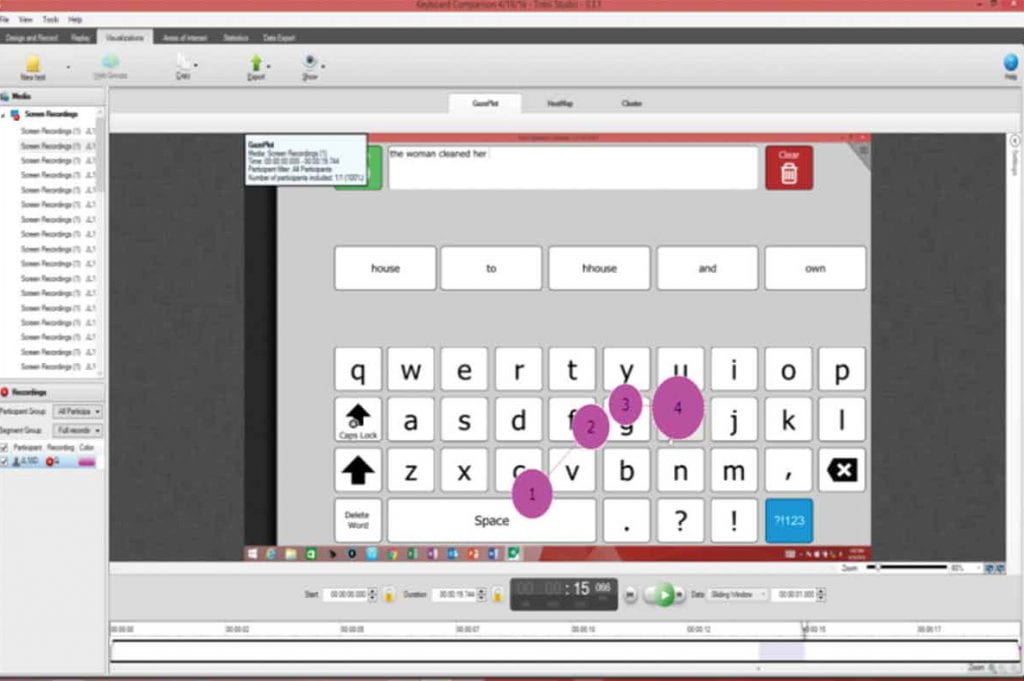
Gormley, J., & Fager, S. K. (2020). Preference and visual cognitive processing demands of alphabetic and QWERTY keyboards of individuals with and without brain injury. Assistive Technology, 1–11. https://doi.org/10.1080/10400435.2020.1826006
Background: Following a severe brain injury (BI), some literate individuals who require augmentative and alternative communication (AAC) strategies to support communication may benefit from the use of onscreen keyboards to generate text. A range of layouts are available to these individuals within specialized communication software. However, a paucity of information is available to describe user preferences, user perceptions, as well as the visual-cognitive processing demands of such layouts. Such information is critical to guide clinical decision-making for keyboard selection and to provide patient-centered services.
The Current Study: This study: (a) described the preferences and perceptions of two onscreen keyboard layouts (QWERTY and alphabetic) and (b) used eye-tracking analysis to investigate the visual-cognitive processing demands between these onscreen keyboards for individuals with and without BI.
Results and Conclusions: Results indicated participants in both groups held a strong preference for QWERTY keyboard interfaces and had extensive prior experience using the QWERTY keyboard layout on mobile devices. Eye-tracking analysis revealed less visual-cognitive processing demands using a QWERTY keyboard layout for both groups but were only statistically significant for those without BI.
Use of a keyboard layout that aligns with client preferences and prior experiences (i.e., the QWERTY keyboard for these participants) may lead to increased satisfaction with the communication experience and increased communication efficiency.
